Transferts monétaires à usages multiples
Les transferts monétaires à usages multiples sont des transferts monétaires non affectés que les personnes vivant en situation de crise peuvent utiliser pour couvrir leurs besoins essentiels. Par nature, il s’agit de la modalité d’aide qui offre le plus de choix, de flexibilité et de dignité aux bénéficiaires. De plus en plus de données montrent qu’il est plus pertinent en termes d’optimisation des coûts et de rapport coût/résultat de répondre à plusieurs besoins à la fois.
Cependant, cette modalité exige aussi des acteurs humanitaires qu’ils mettent en place de nouvelles manières de collaborer, à toutes les étapes du cycle de programme, et entre secteurs. Même s’il existe des outils fiables pour faciliter la collaboration, ils ne sont pas mis en œuvre à grande échelle et le recours aux transferts monétaires à usages multiples est encore ponctuel. Il reste à relever plusieurs défis si nous souhaitons intégrer efficacement les transferts monétaires à usages multiples au système humanitaire.
Contenu associé
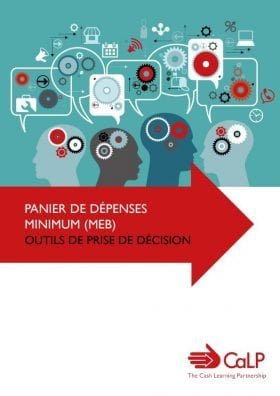
Panier de dépenses minimum (MEB) – Outil de prise de décision
Guides et outils
Cet outil de prise de décision est fait pour accompagner les praticiens et les décideurs à travers les étapes clés du processus de calcul du MEB. Elle décrit les différentes étapes et approches possibles du processus d’élaboration du MEB, et donne des liens vers de nombreuses ressources complémentaires.

Orientations opérationnelles et boîte à outils pour les transferts monétaires à usages multiples
Guides et outils
Les présentes orientations opérationnelles et la boîte à outils qui l’accompagne réunissent une expertise mondiale sur les interventions monétaires. Elles apportent aux acteurs humanitaires des orientations complètes et pratiques afin d’évaluer la faisabilité des transferts monétaires, d’en déterminer la conception et d’en structurer la mise en oeuvre. Les...

Définition des Paniers de Dépenses Minimum (MEB) en Afrique de L’Ouest
Rapport
Au cours de l’année 2017, 5 pays d’Afrique de l’Ouest ont lancé un travail collectif de définition du panier de dépenses minimum, afin de mieux comprendre la contribution de l’aide humanitaire à la couverture des besoins de base des populations affectées et d’améliorer son impact. Ce processus, souvent fastidieux, a soulevé des défis techniques, mais également mis en...
Thematic lead
Latest

Cash Transfers in Lesotho: An evaluation of World Vision’s Cash and Food Transfers Pilot Project
Report
The Cash and Food Transfers Pilot Project (CFTPP) was designed and implemented as World Vision‟s contribution to the humanitarian response to the 2007/08 food crisis in Lesotho. This crisis was triggered by Lesotho‟s worst drought in 30 years, which reduced maize yields by 42% and left an estimated...
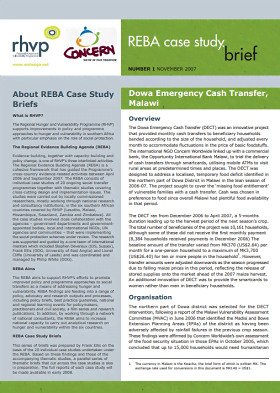
Dowa emergency cash transfer, Malawi
Case Study
This case study looks at the innovative Concern Worldwide project which provided monthly cash transfers to beneficiary households using smartcards utilising mobile ATMs to deliver the cash. The report examines the choice of programme delivery mechanism, the targeting of beneficiaries, coordination, cost...

Evaluation of The Cash Component of the Oxfam Zambia Flood Response 2007
Report
Oxfam Zambia responded to the flooding in Western Province by providing unconditional cash grants to 2100 households over a four month period (May – August 2007) in two wards of Mongu District Ushaa and Lumbo. The grant was designed to prevent malnutrition and harmful levels of asset depletion and...
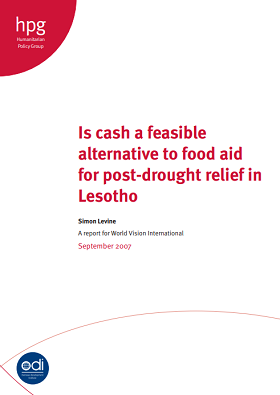
Is cash a feasible alternative to food aid for post-drought relief in Lesotho
Case Study
This report summarises the findings from a study undertaken to assess whether or not a cash based response by World Vision to the current drought in Lesotho would be an appropriate and feasible response. It looks at the potential problems which could affect the feasibility of cash interventions and...
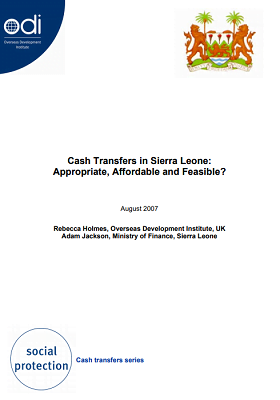
Cash transfers in Sierra Leone: Appropriate, affordable and feasible?
Case Study
This paper is one of a series of outputs from ODI’s research study (2006–09) “Cash Transfers and their Role in Social Protection”. The study aims to compare cash with other forms of transfers, identifying where cash transfers may be preferable, the preconditions for cash transfers to work well,...
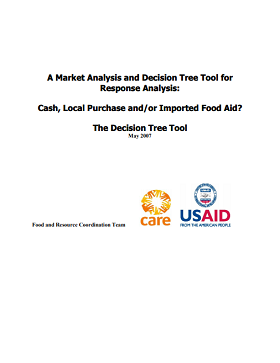
A Market Analysis and Decision Tree Tool for Response Analysis: Cash, Local Purchase and/or Imported Food Aid?
Report
This document provides the Decision Tree Tool, which is to be used for the analysis of response options in a food insecurity context – cash, local purchase or imported food aid (see MIFRA paper). The framework is kept simple for ease of communication with a sequence of specific questions divided into 2...

Mise en oeuvre des interventions monetaires: un manuel pour les professionels du terrain
Guides et outils
Ceci est un guide complet de la théorie et la pratique des interventions monétaires, couvrant les subventions en espèces, bons/coupons, et l’argent contre le travail. Il comprend également des outils pratiques, y compris des exemples de questionnaires, enquêtes de marché, les cartes de...

Cash Workbook – A Practical User’s Guide for the Preparation and Implementation of Cash Projects
Report
Since 1999, the Humanitarian Aid Department of the Swiss Agency for Development and Cooperation (SDC), a division of the Federal Department of Foreign Affairs, has implemented a series of Cash Transfer Projects in different humanitarian contexts. Cash grants provided to more than 100,000 people in need...

External Evaluation Report on the Cash for Repair and Reconstruction Project Sri Lanka
Report
The Indian Ocean tsunami caused huge loss of life, displacement and destruction in Sri Lanka. People’s immediate priorities were to find shelter, safety, meet basic needs and trace and mourn loved ones. The population affected took shelter with relatives and friends, in temples, mosques and public...
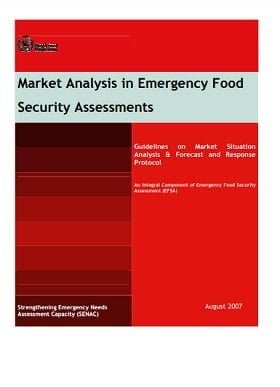
Market Analysis in Emergency Food Security Assessments
Guidelines and Tools
This document provides a generic overview of market analysis as an integral part of an emergency food security assessment. The main objective is to provide a basic understanding of markets, including how to gather market information, conduct a situation analysis, and
interpret the analysis to inform...
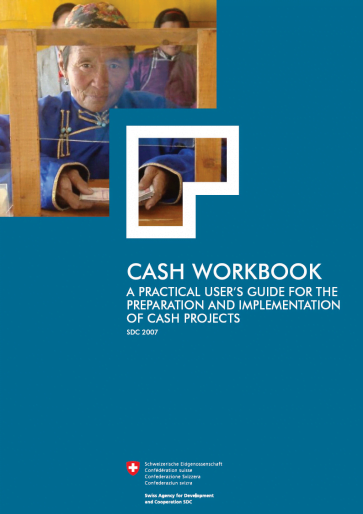
Cash Workbook: A Practical User’s Guide for the Preparation and Implementation of Cash Projects
Guidelines and Tools
This workbook is a tool that guides managers through the project cycle of managing a cash transfer programme including administrative and database setup, and project management systems and procedures.

Market Analysis Tools in Rapid-Onset Emergencies: Phase one report
Report
This report was commissioned by Oxfam’s Emergency Food Security and Livelihood (EFSL) team as part of a larger exercise to develop a market analysis toolkit for rapid-onset emergency situations. The impetus for this arose from the recognition by Oxfam, other humanitarian agencies and donors that the...
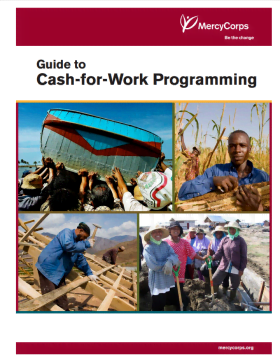
Guide to Cash-for-Work Programming
Guidelines and Tools
Cash-for-Work is a short-term intervention used by humanitarian assistance organizations to provide temporary employment in public projects (such as repairing roads, clearing debris or re-building infrastructure) to the most vulnerable segments of a population. The methodology is relatively new, but its...

The Use of Cash/Vouchers in Response to Vulnerability and Food Insecurity: Case study review and analysis
Report
This document summarizes the major characteristics and outcomes of 27 recent pilots, projects or programs worldwide that made use of cash and/or vouchers to provide benefits to people in need. The concluding section attempts to synthesize the commonalities and contrasts among those cases, as a first step...
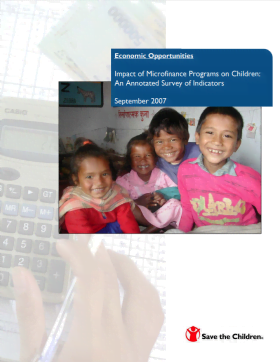
Impact of Microfinance Programs on Children: An annotated survey of indicators
Report
The purpose of this study is to ascertain what indicators have been used by multisectoral, child-focused non-governmental organizations (NGOs), microfinance practitioners and social performance researchers to assess processes that address children’s concerns in operations and the impact of microfinance...
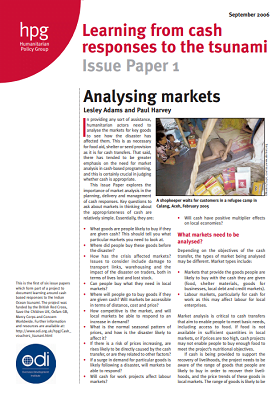
Learning from cash responses to the tsunami: Issue Paper 1: Analysing markets
Report
This is the first of six issue papers which form part of a project to document learning around cash-based responses to the Indian Ocean tsunami. The project was funded by the British Red Cross, Save the Children UK, Oxfam GB, Mercy Corps and Concern Worldwide. This 5-page Issue Paper explores the broad...
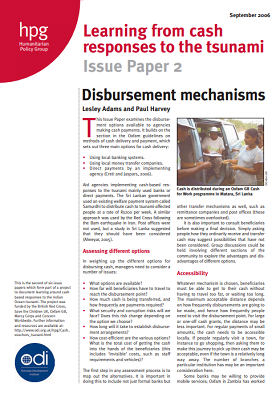
Learning from cash responses to the tsunami: Issue Paper 2: Disbursement mechanisms
Report
This is the second of six issue papers which form part of a project to document learning around cash-based responses to the Indian Ocean tsunami. The project was funded by the British Red Cross, Save the Children UK, Oxfam GB, Mercy Corps and Concern Worldwide. This 5-page Issue Paper examines the...
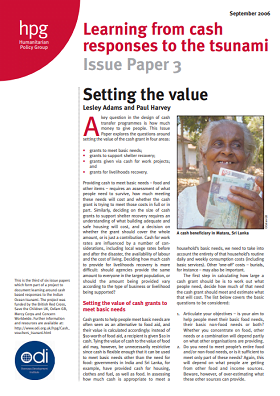
Learning from cash responses to the tsunami: Issue paper 3: Setting the value
Report
This is the third of six issue papers which form part of a project to document learning around cash-based responses to the Indian Ocean tsunami. The project was funded by the British Red Cross, Save the Children UK, Oxfam GB, Mercy Corps and Concern Worldwide. A key question in the design of cash transfer...

Learning from cash responses to the tsunami: Issue Paper 4: Cash and shelter
Report
This is the fourth of six issue papers which form part of a project to document learning around cash-based responses to the Indian Ocean tsunami. The project was funded by the British Red Cross, Save the Children UK, Oxfam GB, Mercy Corps and Concern Worldwide. This Issue Paper highlights some of the key...
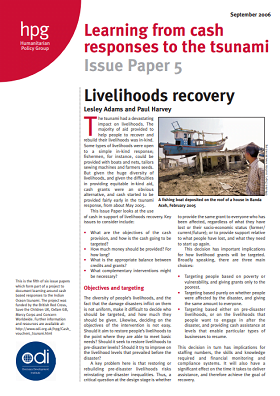
Learning from cash responses to the tsunami: Issue Paper 5: Livelihoods recovery
Report
This is the fifth of six issue papers which form part of a project to document learning around cash-based responses to the Indian Ocean tsunami. The project was funded by the British Red Cross, Save the Children UK, Oxfam GB, Mercy Corps and Concern Worldwide. This Issue Paper looks at the use of cash in...

